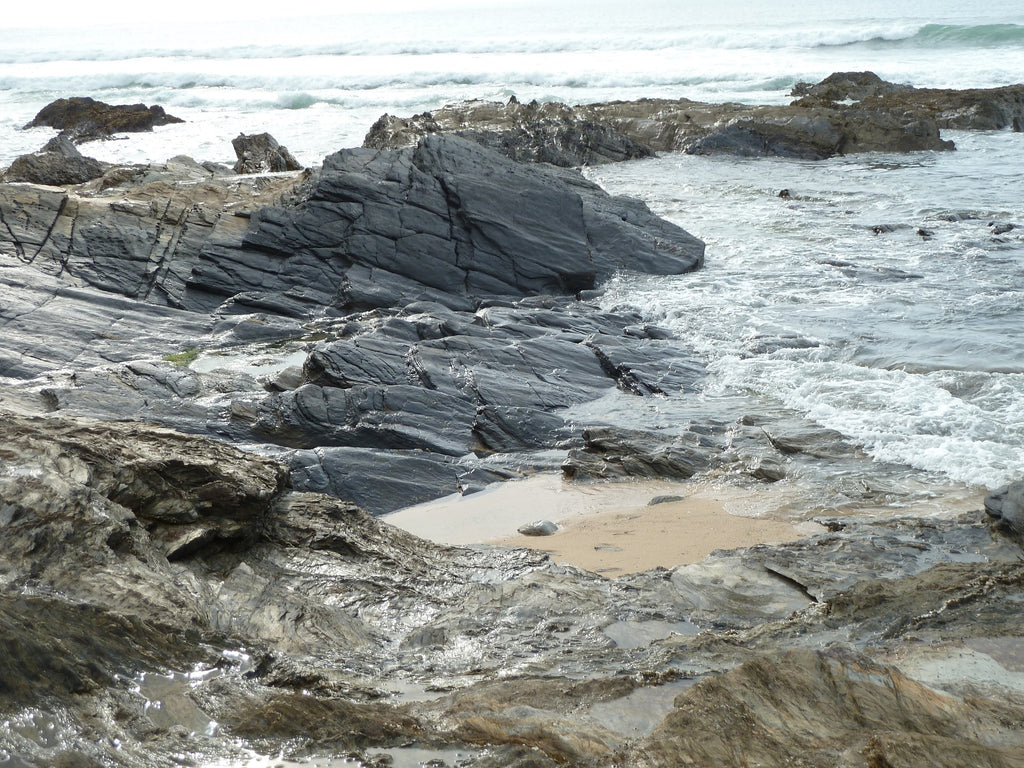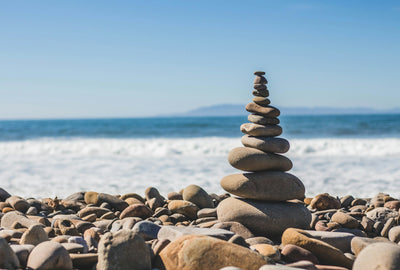In this material guide, we introduce you to slate in more detail. Slate has long been used as a building material because of its properties. Today, however, the rock does not only come in Outside, but also inside houses, with decorative objects and when tinkering. Through an engraving with the laser cutter, you can give the beautiful material an individual touch. Below you will learn what is slate, which properties he has and where you can use it.
Slate - ancient rock in a variety of composition

Slate is a widespread natural rock, which is composed of diverse ingredients. Mostly the term is used for the so-called clay slide, which contains in addition to clay also larger amounts of minerals such as quartz, chlorite or field spat. Occasionally, you also find remains of fossils in the natural material. Characteristic of slate rocks are the many parallel slating surfaces where the blocks and plates can easily be split.
Today's slate deposits have emerged from a fine-grained clay sludge, which has deposited about 300 to 400 million years ago on the ground of the then seas. By moving the earth's surface, these clay layers were exposed to high temperatures and pressures. Through further earth movements, this mudstone broke up and, again under great heat and high pressures, finally became shale.
Because of the deposits contained calls clay to the so-called sediment rocks. The action of temperatures and pressures in the formation simultaneously makes him a metamorphic rock.
Where and how is slave dismantled?

Slate rock occurs in many countries of the earth and in almost all continents. In Germany, it has been reduced in different regions for centuries. Larger occurrences can be found here almost exclusively in the low mountain ranges, especially in Western Germany as well as in Thuringia, Bavaria and Saxony. In the European room applies Spain as the biggest slate producer. Significant amounts of the rock can also be found in France and the United Kingdom.
Since every slate occurrence has arisen under unique conditions, have Slate from different regions also a different composition. This is not only evident in the coloring, but also in properties such as hardness or cleavability.
The Removal of the slate is usually underground. Often the rock lies several hundred meters deep under the earth. There it is first split into large blocks with diamond saws, which are then promoted to the surface. During further processing, a lot of manual work is still used. For example, a splitter releases with special tools from the larger slate blocks individual plates out. In other work steps, these plates finally get their later form.
Which slate types are there?
At the term of the different slate species, You almost always recognize your origin. Already about 100 years ago, the slate companies and the roofers agreed in Germany regional designations that are still valid. Only slate from certain places may carry this name. Most commonly, you will find the following slate species from Germany:
- Hunsrücker slate
- Moselschief
- Sauerland slate (or even slate from Westphalia and Waldeck)
- Thuringia slate
From Oberfranken also comes the Lotharheiler slate. Well-known European slate species are the Ligurian slate from Italy and the Porto slate from the Portuguese Valongo.

In addition to these widespread clay slides, you will also find slate species that have been created in a second step from the clay slide. They therefore have other properties. Thus, in the so-called mica slice formed by the Further influence of pressure and temperature, other minerals out. An example of this is the shimmering Otta Phyllite from Norway. The name fruit shortcuts in turn points to characteristic grain-shaped mineral inclusions in the rock.
Slate has many useful properties
Although the different Shells differ in properties such as hue or hardness, you also have many shared features. Typical is above all the cleavability of the rock. It leads to the fact that slates along the slating surfaces can be divided into ever thinner plates.
For the different uses, you usually find plates with a thickness of about five millimeters. Your surface is not smooth, but rough and shows one individual structure each. Optionally, you can also purchase ground plates with a flat surface.
In addition to the layered structure, you also recognize the rock on its color typically at the clay slide From light gray to black is enough. Depending on the composition, you will find blue, green or red shades for individual slate species.
Despite the fine layers, slate has many qualities that make it resistant and durable. So most species are insensitive to frost, wind and water. In addition, the rock heat can lead well and save, but is not flammable at the same time. An exception form here, so-called oil slates, which are still occasionally used to obtain oil or energy.
Long tradition as building material

Slate is because of its properties For centuries a popular building material for centuries. It not only serves as stable, weather-resistant and fire-resistant cover for the roof, but also applies to the disguise and design of the facade. In Traditional slate pension regions like Thuringia or the Eifel Can you see the diverse use of the material to today at numerous houses.
More recently, slate rock is also commonly used indoors. Here you can give your rooms Natural, simply and at the same time lending. Popular are especially slate tiles that create an attractive flooring. This can be easily cleaned and offers a pleasant roughness at the same time at the same time. In bath and kitchen, you also benefit from the water resistance of the rock.

With slight pollution, you can easily clean slate surfaces with a broom or brush. Alternatively, you can also wipe yourself well with a damp cloth. But you should use only clear water or some mild soap as aggressive cleaner attack the material. Special impregnating agents can protect slates in the household in the long term before the penetration of dirt and dust, and with stone or slate oils you bring the slate surfaces to shine.
Create and tinker with slate

Even off the house construction, slates have been appreciated for a long time. So he was for generations of students and teachers as a slate table, an integral part of everyday life. Even today, such panels are available. They can represent a visually appealing and ecological alternative to paper in various areas, such as in the gastronomy or in the office.
Smaller slate plates you can also as Practical and decorative elements use in many places in house and garden. Whether as a house number plate, as a coaster, as a border for flower beds or as a plant sign - the resistant material offers you a good basis for many uses. Slate is also popular with owners of aquariums and terrariums because of its interesting appearance.
=== Product ===
Slate Coaster 12er Pack
=== Product ===
Slate Plate 45x30 cm 2-pack
=== Product ===
Slate Heart 10 Pack
=== Product ===
For tinkering, you can buy slate plates relatively inexpensive in a variety of sizes and shapes, often with the appropriate holes for further processing. For example, you can even individual signs and Keychain, create a shelter for your fish in the aquarium or also a nativity scene made of slate rocks.
Slate engraving with the Mr Beam Laser cutter

With an Engraving of the slate do you still live on your creativity. The Mr Beam Laser cutter supports yourself with its precision and speed. Whether signs, patterns or pictures, door sign or wall decoration - with the device you can quickly and clean your desired motif on different slate plates. The bright engraving forms a great contrast with the dark color of the slate. You can not edit with the laser cutter but also many other materials, e.g. Wood, cork, felt and acrylic. Out acrylic Can you wonderful yours Craft your own stencils. The applications are really very diverse.



